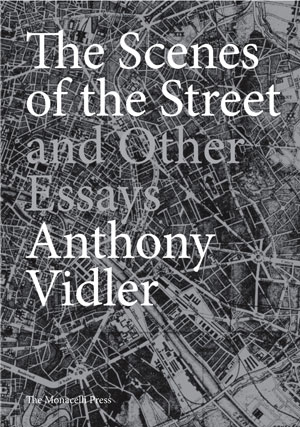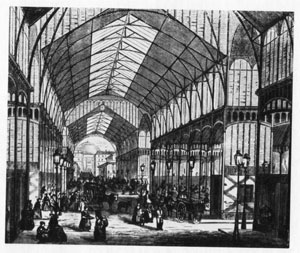

Some first impressions about this new collection of old essays by Anthony Vidler are misleading. The title, for instance, The Scenes of the Street, and the city plan on the cover indicate a broad coverage of topics regarding the city. In fact, two thirds of the book is dedicated to Paris and most of that to Paris before the turn of the 20th century. Those essays that do not deal with Paris directly are mostly concerned with theories created by 19th century French male architects, authors, and humanists. Vidler’s texts are knowing and erudite, but if you are not already interested in the likes of Laugier, Patte, Ledoux, Fourier, Saint-Simon, Considerant, Mercier, Nodier, Engels, Bentham, Balzac, Zola, and Le Corbusier, Vidler does little to convince you to care.
For those who do, however, Vidler’s meticulous analysis is often stunning. If there is a theme that carries through the book, it is the role of metaphor in the creation of the city. The title essay traces how shifting ideas of health and medicine are read into and onto Paris—defining districts as normal and pathological, how passages were opened to clear “miasma” and blocked to create revolutionary barricades, among other examples (here and elsewhere, Vidler’s debt to Michel Foucault is clear). Subsequent essays examine, with varying success, more focused topics—the obelisk in 19th century French literature or the changing ideal of the museum, for example.
In the introduction, Vidler, who is the dean of Cooper Union's school of architecture, writes that he hopes the book’s historical discussions might “lead to a renewal of interest in an architecture calculated to redeem, if only partially, our planet of slums and its deteriorating environment.” Yet nearly every one of Vidler’s subjects of study refuses to engage the city on its terms, choosing instead to abstract its conditions into idealized and often devastating interpretations. Though admirable, this volume has little to offer for the cities of the future, which will require their own metaphors and suffer their own failures.





Post a comment to this article
Report Abusive Comment